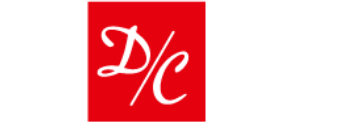November 4, 2023

In the intricate world of aerospace, precision, safety, and efficiency are not just desired but are imperative. When it comes to transporting aerospace components, which are often sensitive, expensive, and critical to operations, the margin for error is minuscule. Aerospace crating mistakes can lead to costly damages, project delays, or even catastrophic failures. For those in packing services dedicated to the aerospace industry, understanding and mitigating these pitfalls is paramount. Let’s explore some of these common missteps and strategies to ensure they don’t hinder operations.
Inadequate Customization to Component Specifications
One of the primary aerospace crating mistakes lies in adopting a one size fits all approach. Given the diversity of aerospace components, from engines to avionics equipment, each item often requires specialized crating solutions tailored to its unique dimensions, weight, and fragility. Using standardized crates might seem cost effective initially, but the potential risk of damage could dwarf any initial savings.
To navigate this, it’s essential to invest time in understanding the specific requirements of each component. Collaborating closely with engineers or technical experts can offer insights into the best crating solutions. By ensuring each crate is customized to the component it houses, the risk of damage during transportation reduces significantly.
Overlooking Climate Control Features
Aerospace components are often sensitive to environmental factors like temperature, humidity, or pressure. A common oversight in aerospace crating is neglecting to incorporate climate control features, especially when transporting items across varied geographical terrains with different climatic conditions.
To circumvent this, companies should assess the environmental needs of the components they’re shipping. This could involve integrating insulation, moisture barriers, or even advanced climate control systems within the crate. Such proactive measures ensure that sensitive aerospace parts remain shielded from potentially harmful external conditions.
Neglecting Advanced Tracking and Monitoring
In today’s digital age, merely transporting an item from point A to point B is no longer sufficient. Stakeholders often require real time tracking and condition monitoring, especially for high value aerospace components. Overlooking the integration of advanced tracking and monitoring systems is a mistake that can lead to a lack of transparency and potential mishandling without timely detection.
To avoid this, packing services should integrate state of the art tracking systems into their crating solutions. Modern sensors can not only track the crates location but also monitor conditions inside, sending real time alerts if any parameters deviate from the norm. Such systems empower stakeholders with information, ensuring timely interventions if needed.
Skimping on Quality to Cut Costs
The aerospace industry, with its high stakes, is not the place to cut corners, especially when it comes to crating. Opting for subpar materials or construction techniques to save on costs can backfire, leading to damaged components and tarnished reputations. Sacrificing quality for cost savings in aerospace crating is a shortsighted approach that can lead to long term financial and operational setbacks.
The antidote to this mistake is simple: never compromise on quality. Investing in high quality materials and construction techniques ensures the safety of the components and the reliability of the crating solution.
In the meticulous domain of aerospace, where every detail matters, ensuring the impeccable transportation of components is crucial. Avoiding common aerospace crating mistakes not only prevents financial losses but also cements a company’s reputation as a reliable partner in the industry.
